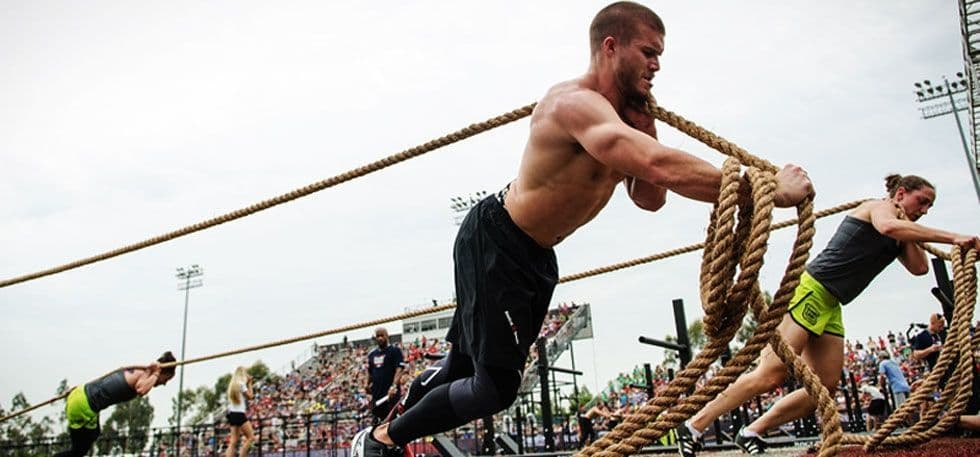In the realm of fitness and physique development, a timeless debate rages on: the pursuit of raw strength versus the quest for aesthetic perfection. Are you striving to lift cars or sculpt a body worthy of a Greek god? Each path has its own allure, benefits, and passionate advocates. In this exploration, we delve into the intriguing world of ‘Strength vs. Aesthetics,’ uncovering the nuances, goals, and choices that individuals face on their fitness journey.
Whether you aim to hoist heavy weights or carve a physique that turns heads, this article will guide you through the fascinating duality of fitness pursuits, helping you make the choice that best aligns with your personal goals and aspirations.
Bodybuilding: The Pursuit of Aesthetics
Key Concepts
Bodybuilding is a fitness art form that goes beyond lifting weights. It’s about sculpting a symmetrical, well-defined, and aesthetically pleasing physique. The primary focus is on achieving:
- Aesthetics: Striving for a visually pleasing physique through proportion and symmetry;
- Muscularity: Developing well-defined muscles with clear separation between muscle groups;
- Symmetry: Ensuring that both sides of the body are equally developed;
- Conditioning: Reducing body fat to reveal muscle definition and striations;
- Presentation: Mastering the art of posing to showcase the physique’s strengths.
Hypertrophy for Bodybuilding
Muscle hypertrophy, or the increase in muscle size, is the core objective for bodybuilders. Techniques like drop sets, supersets, and isolation exercises are employed to maximize muscle growth. Optimal rep ranges for hypertrophy typically fall between 8–12 reps, with rest periods of 60–90 seconds to facilitate muscle recovery.
Famous Bodybuilders
Legends like Arnold Schwarzenegger, Ronnie Coleman, and Jay Cutler have set the bar high in the world of bodybuilding. Their dedication and unique philosophies have inspired countless fitness enthusiasts to pursue their dreams.
Strength Training: The Raw Power Approach
Key Concepts
Strength training, often associated with powerlifting, is all about raw strength and maximal lifting capacity. It revolves around three primary lifts: squat, bench press, and deadlift. Key aspects include:
- Primary Lifts: Focusing on squat, bench press, and deadlift for maximal strength in a single repetition;
- Attempts: Athletes get three attempts per lift to reach their maximum weight;
- Powerlifting Total: Determining the winner based on the sum of their best attempts in each of the three lifts;
- Ranking: Rankings are established based on body weight and age categories.
Hypertrophy for Strength Training
While strength training prioritizes raw power, controlled hypertrophy plays a significant role in building supportive muscles for successful lifts. Accessory exercises like rows, pull-ups, and lunges contribute to strength development. Strength training often involves lower rep ranges, typically between 1–5 reps, with longer rest periods to ensure complete recovery between heavy sets.
Famous Powerlifters
Icons like Ed Coan and Konstantin Konstantinovs have demonstrated incredible raw strength, setting numerous world records and elevating powerlifting to a new level.
A Balanced Approach: Blending Strength and Aesthetics
While bodybuilding and strength training have distinct objectives, blending elements from both worlds offers a well-rounded fitness approach. This approach brings several benefits:
- Comprehensive Strength: Develop both maximal strength and muscular endurance;
- Muscle Aesthetics with Function: Achieve a physique that’s both visually appealing and functional;
- Reduced Risk of Injury: Diverse training reduces overuse injuries and strengthens various muscle groups;
- Mental Engagement: Switching between training styles keeps workouts fresh and challenging;
- Optimized Recovery: Alternating between heavy lifting and hypertrophy allows muscles to recover effectively.
Incorporating periodization, which alternates between phases of bodybuilding and strength training, can help strike a balance without overtraining.
What is a Gym Pump?
A gym pump, scientifically known as exercise-induced hyperemia, is a phenomenon that occurs during high-intensity resistance training. It results from increased blood flow to the working muscles, leading to a temporary increase in muscle size and firmness. This temporary state, typically lasting between 15 minutes to an hour post-workout, is a sign that the muscles are adequately fueled and ready for growth and repair. The gym pump is not just about aesthetics; it also aids in nutrient delivery, recovery, and muscle growth.
Comparison: Bodybuilding vs. Strength Training
| Aspect | Bodybuilding | Strength Training |
|---|---|---|
| Primary Objective | Aesthetics, symmetry, and muscle definition | Maximal strength in squat, bench, and deadlift |
| Training Focus | Muscle hypertrophy and isolation exercises | Compound movements and maximal lifts |
| Rep Range | Higher (8-15 reps) for muscle growth | Lower (1-5 reps) for strength |
| Rest Periods | Shorter (30s-90s) to induce muscle fatigue | Longer (2-5 mins) for full recovery |
| Competition Criteria | Judged on muscle size, symmetry, and posing | Based on the weight lifted in three main lifts |
This table provides a concise overview of the main distinctions between bodybuilding and strength training, helping individuals make informed decisions about their fitness goals and training preferences.
Video Guide
To answer all your questions, we have prepared a video for you. Enjoy watching it!
Conclusion
Whether you’re drawn to bodybuilding for aesthetics or strength training for raw power, both approaches offer unique benefits. However, a balanced approach that incorporates elements from both worlds can lead to a more holistic fitness journey. Remember, consistency, professional guidance, and enjoyment of the process are key to fitness success. Your fitness journey is a marathon, not a sprint, and who knows, you might inspire someone else on their journey to a healthier, stronger self!
